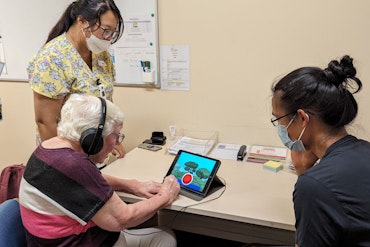New Aged Care Act unveiled: what happened to make it happen?
What made the cutting room floor for the new Aged Care Act, what does it mean for your hip pocket and the care sector at large?
![<p>The new Aged Care Act has arrived, coming in at 566 pages, but what does it all mean for older Australians? [Source: Shutterstock]</p>](https://agedcareguide-assets.imgix.net/news/articles/wp/newagedcareact.jpg?fm=pjpg&format=auto&w=550&q=65)
The new Aged Care Act has arrived, coming in at 566 pages, but what does it all mean for older Australians? [Source: Shutterstock]
Key points:
- The Aged Care Bill 2024 was introduced to the Parliament of Australia on Thursday, September 12, 2024
- The new Aged Care Act is expected to commence from July 1, 2025
- Forty-six percent of residential aged care providers incurred a loss from accommodation in 2022 – 2023 under the existing funding arrangements
The Aged Care Bill 2024 has been introduced to the Parliament of Australia following bipartisan support and the Royal Commission into Aged Care Quality and Safety.
The new Aged Care Act is set to take effect from July 1, 2025, if passed. From that date, entrants into the national aged care system will be subject to different conditions than those currently receiving care.
A new fee structure will see aged care recipients paying greater co-contributions for their care, except for clinical care which will be completely funded by the government.
This is expected to impact 30 percent of new entrants receiving a full pension and 75 percent receiving a part pension.
New entrants will pay a hotelling supplement if they have more than $238,000 in assets, $95,400 dollars in annual income or a combination of the two. Residents may contribute to their means-tested basic daily fee, renamed the ‘non-clinical care fee,’ if they have more than $500,000 in assets, more than $130,000 dollars in income or a combination of the two.
The treatment of the family home will remain unchanged. As of July 2024, the residential means test includes a home exemption cap of $201,231.20 dollars.
A lifetime cap on fees means no one entering aged care after July 1 2025 will pay more than $130,000 dollars in non-clinical care costs over their lifetime. This includes both home care and residential care expenses. The current lifetime cap is $80,000 dollars.
Aged care recipients will see the price of accommodation increase, with providers able to charge up to $750,000 dollars for a room — currently, the limit is $550,000 dollars.
Residential aged care providers could keep two percent of accommodation deposits from residents annually for five years under the new bill.
Existing aged care recipients, including those in residential aged care, receiving home care services or approved for home care — but waiting for a package — will be exempt from co-contributions.
For every dollar an older Australian contributes to their residential aged care, the government will contribute an average of $3.30 dollars.
Minister for Aged Care Anika Wells emphasised the new ‘Support at Home’ system, citing the trend towards aged care received in a person’s residence, rather than a dedicated facility.
The Support at Home program will replace the Home Care Packages Program and Short-Term Restorative Care Programme from July 1, 2025. The Commonwealth Home Support Programme will transition to the new program no earlier than July 1, 2027.
Participants will be assessed into one of 10 new funding classifications; the new classifications improve upon the existing HCP Levels 1 – 4 by better-aligning funding to need.
This includes eight ongoing classifications and two short-term classifications — the restorative care pathway and the end-of-life care pathway.
Under Support at Home, the highest ongoing classification exceeds the current Level 4 HCP, with a budget of almost $78,000 dollars per year.
The government has pledged to invest $4.3 billion dollars in the Support at Home program that will come into effect on July 1, 2025 and help Australians remain independent, in their home and communities, for longer.
”We’ve heard the message from older Australians: they want support to stay in the homes and communities they love,” she said.
“Support at Home will help around 1.4 million older Australians do just that, with shorter wait times, more levels of support and funding for home modifications.
“Older Australians will get support to spend their final weeks at home, surrounded by loved ones in an environment they cherish, instead of rushing precious moments into hospital visiting hours.”
For every dollar full pensioners contribute to Support at Home, the government will contribute an average of $12.90 dollars.
For every dollar part pensioners contribute to Support at Home, the government will contribute an average of $6.10 dollars.
Council on the Ageing Australia Chief Executive Officer said the government’s significant focus on and investment in Support at Home will be welcomed by older Australians who want greater choice for aged care.
“Now that we’ve finally got past all the roadblocks stopping the introduction of the Aged Care Act, parliament now needs to ensure that Australians have adequate time to scrutinise the legislation and provide feedback,” Ms Sparrow said.
“There’s no question that — when it comes to aged care in Australia — business-as-usual is unacceptable.
“Ambitious reform is required to fix the current aged care system to meet the needs of our ageing population and increasingly complex aged care needs and the Aged Care Act is central to making this happen.
“Australians of all ages, including older people, now need the opportunity to look into all the detail contained within the 550 pages [sic] to ensure that all of its elements are fair, transparent, easy to understand and equitable for all older Australians.”
COTA Australia was among the 12 organisations that work with older people and carers that created the Key Issues Paper, which outlined concerning aspects of the new Aged Care Act Exposure Draft.
The Key Issues Paper sought for the Aged Care Bill 2024 to enforce:
- the rights of older people that address the current power imbalance;
- the development of a robust, independent complaints system;
- transparency of timelines and funding;
- strong regulation and penalties for those found guilty of not upholding the rights of older people.
The Coalition had reportedly made a number of significant changes before the Aged Care Bill 2024 secured bipartisan support between the Labor and Opposition Governments.
An earlier version of the new Aged Care Act included criminal penalties for serious breaches of conduct, however, the bill — subject to senate inquiry — has omitted these punitive measures and introduced civil penalties for providers in breach of conduct.
Do you believe that the new Aged Care Act should pass?
Let the team at Talking Aged Care know and subscribe to the newsletter for more information, news and industry updates.
Related content:
Aged Care Act delayed — who will be impacted?
How an ageing population permanently changed the Australian economy
What is money being spent on in Australia’s aged care sector?























